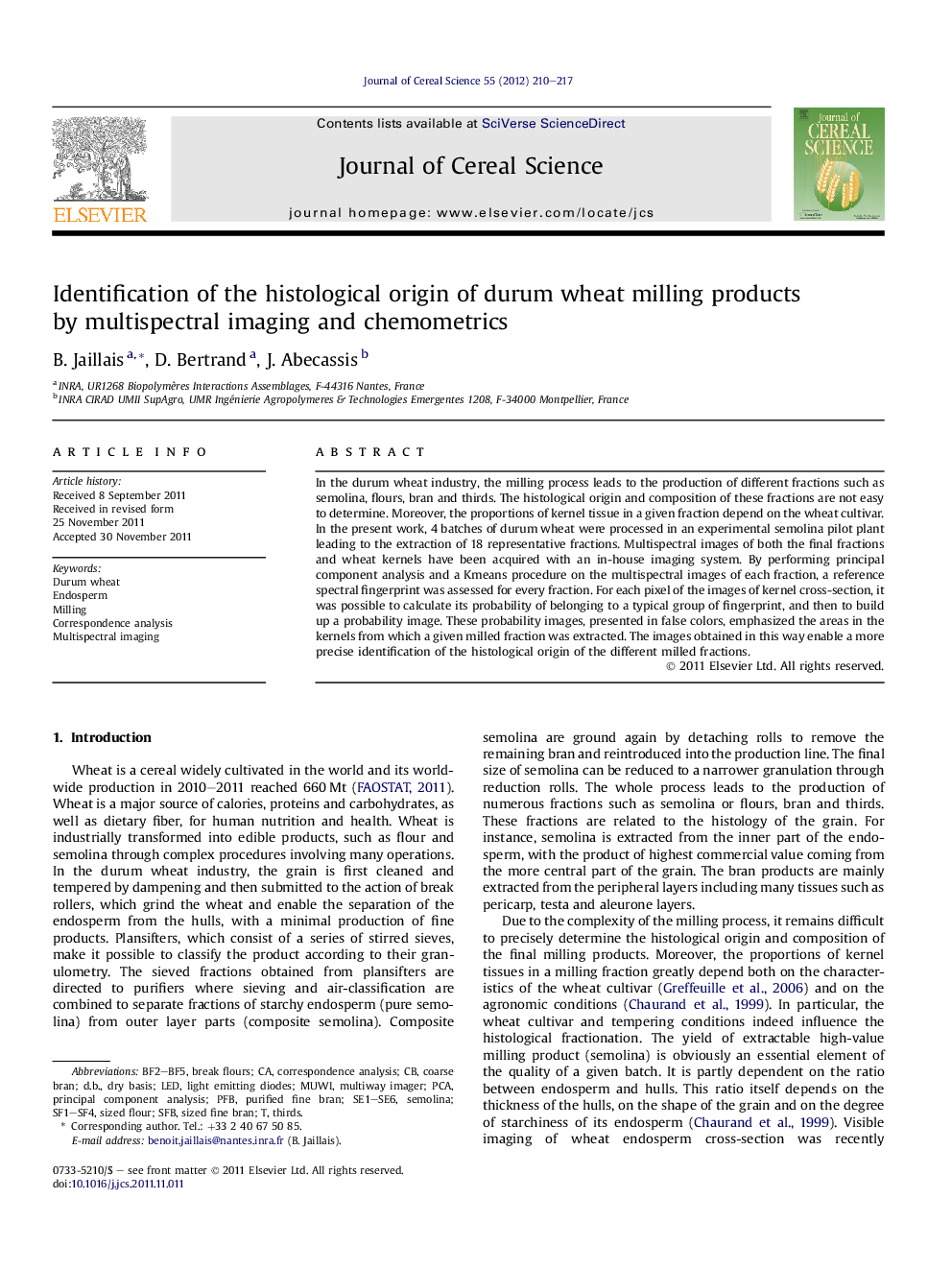| Article ID | Journal | Published Year | Pages | File Type |
|---|---|---|---|---|
| 4516093 | Journal of Cereal Science | 2012 | 8 Pages |
In the durum wheat industry, the milling process leads to the production of different fractions such as semolina, flours, bran and thirds. The histological origin and composition of these fractions are not easy to determine. Moreover, the proportions of kernel tissue in a given fraction depend on the wheat cultivar. In the present work, 4 batches of durum wheat were processed in an experimental semolina pilot plant leading to the extraction of 18 representative fractions. Multispectral images of both the final fractions and wheat kernels have been acquired with an in-house imaging system. By performing principal component analysis and a Kmeans procedure on the multispectral images of each fraction, a reference spectral fingerprint was assessed for every fraction. For each pixel of the images of kernel cross-section, it was possible to calculate its probability of belonging to a typical group of fingerprint, and then to build up a probability image. These probability images, presented in false colors, emphasized the areas in the kernels from which a given milled fraction was extracted. The images obtained in this way enable a more precise identification of the histological origin of the different milled fractions.
► Identification of histological origin of milled products. ► Extraction of spectral fingerprints from multivariate images. ► False color images of kernels according to proportions of each milled products. ► Imaging is a valuable tool for large-scale phenotyping in breed selection programs.
